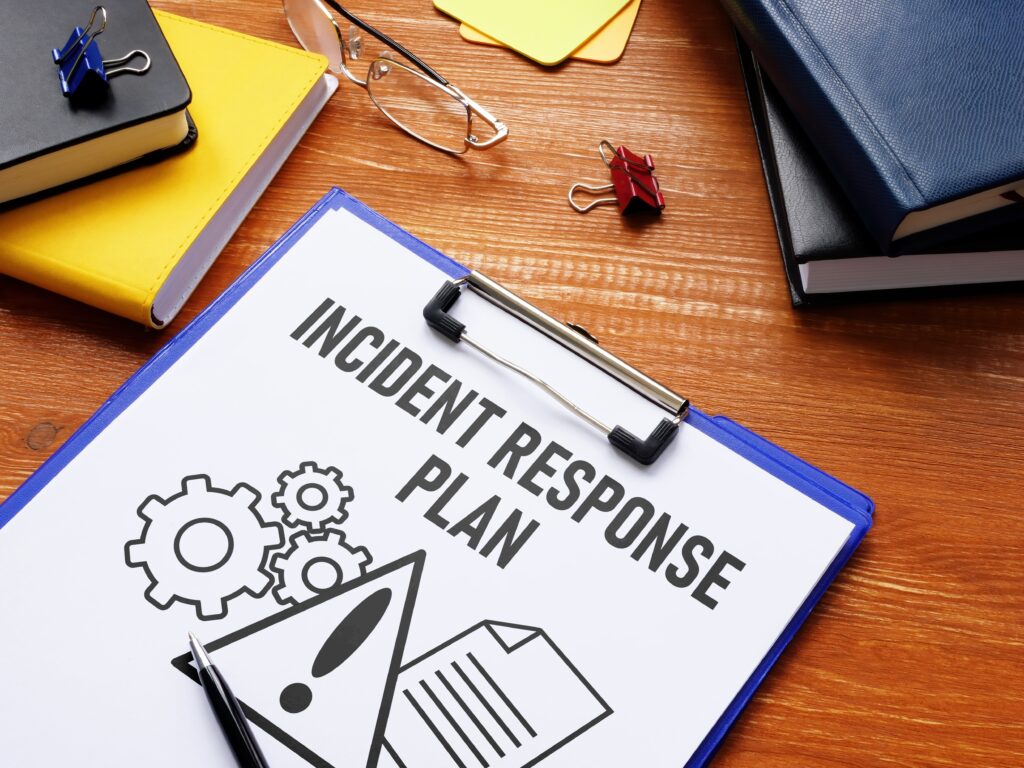Overview
Welcome to the Cybersecurity Mindset Channel, my name is Alex Hubbard. I’m a Cybersecurity engineer, sysadmin, vCISO – all around IT guy. Often you’ll hear someone mention a “tabletop exercise” – what does that mean? They’re not talking about a table talk apple pie – that’s for sure! Understanding Tabletop Exercises doesn’t have to be challenging.
A tabletop exercise is a play on words. It’s not really an exercise nor is conducted (in today’s world) at a tabletop. It’s a simulation or discussion. Exercises allow an organization’s stakeholders gather to simulate real-life scenarios. Unlike full-scale drills, tabletop exercises are typically conducted in a controlled environment without the need for live systems or actually impacting operations. Participants engage in a series of discussions and decision-making processes to navigate through hypothetical scenarios.
Tabletop exercises can be used in a number of IT and Cybersecurity tests. They’re most commonly used with Incident Response, Business Continuity and Disaster Recovery. All of these plans often involve more than just the IT and Cybersecurity teams. Therefore it is a necessity to “test” or vet these plans prior to needing to execute them in real life. Often times you’ll come away with thing you’ve learned. You’ll then be able update your policies and procedures to reflect what was learned during the tabletop exercise. This will ultimately help your organization respond to disasters and incidents in a more timely, organized, less chaotic fashion.

Understanding Tabletop Exercises
A tabletop exercise enables an organization to create scenarios that mimic potential incidents or disasters, whether they’re cyberattacks, data breaches, environmental, physical and so on. These exercises provide a safe space for teams to practice their response strategies, identify vulnerabilities, identify gaps and refine incident and disaster handling procedures. Scenarios can be created for Incident Response, Business Continuity and Disaster Recovery. For instance, if you’re in an area prone to hurricanes, you might have a tabletop exercise geared toward handling a massive outage at a local datacenter due to a hurricane. You could have an Incident Response exercise regarding a potential data breach. Anything reasonable is acceptable as a scenario. Tabletop exercises against any of the aforementioned plans should each be tested, independently, on a minimum of an annual basis.
Understanding Tabletop Exercises: Incident Response
Collaboration is a huge part of effective incident response and disaster recovery. You’ll likely be interacting with other business leaders and stakeholders for the duration of the incident or disaster, and then there after until its resolved. Tabletop exercises encourage collaboration among the many different teams within an organization, getting them to work together to develop coherent and coordinated response plans. Collaboration also allows the various team members to understand their roles in a given situation.
Scenarios presented during tabletop exercises force the participants to make critical decisions without being under pressure. These exercises highlight gaps in decision-making processes, allowing teams to refine their strategies and improve overall response times.
Every plan has some kind of weakness. Tabletop exercises uncover weaknesses in Incident Response and Disaster Recovery plans. Weaknesses could be anything from a communication breakdown, flaws in procedures and workflows, and even resource deficiencies. By identifying these weaknesses in a controlled environment, organizations can rectify them before a real incident unfolds.
Understanding Tabletop Exercises: Disaster Recovery
Looking at Disaster Recovery plans, these outline the steps to restore operations after a disruptive event. Tabletop exercises help validate the effectiveness of these plans by simulating disasters like data center failures, natural disasters, or prolonged system outages. Through these simulations, organizations can fine-tune their recovery strategies and thus making them more prepared for future events before they even occur.

During disasters and incidents, resource allocation is critical. These annual exercises that we go through test an organizations resource availability, allocation processes, and coordination among teams. This helps to ensure that the necessary resources are distributed effectively to minimize response time and downtime.
Effective communication is important during disaster recovery and incident response efforts. Well thought out scenarios can highlight communication bottlenecks. Addressing these issues after an exercise allows the organization to develop better communication protocols that ensure timely updates and collaboration.
Conclusion
Real disasters and cybersecurity related incidents hardly ever unfold exactly as planned. Practice makes perfect. To some extent. Tabletop exercises teach teams within your organization to adapt and remain flexible in the face of unexpected challenges, preparing them to handle evolving situations during actual incidents and disasters.
Overall, tabletop exercises are a key piece to your organizations security program. An organization with a mature cybersecurity program is going to have well-developed incident response, business continuity and disaster recovery plans in place. These should be tested on a minimum of an annual basis and the results documented so that your teams can be ready in the event of a real life incident or disaster. Scenarios should be as close to real-life as possible.
I hope this video helps you with understanding tabletop exercises and their importance as they pertain to Incident Response and Disaster Recovery. If you found it helpful, please consider liking and subscribing below as it really helps with the YouTube algorithm. You can check out my blog site for other additional content at achubbard.com. In the meantime, stay secure and I’ll see you in the next video.
